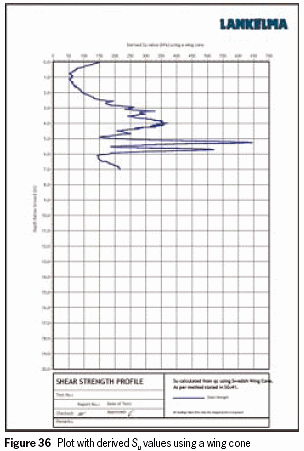Chapter 4
Part 3: Special cones: other cones
Wing cone
| WING CONE 4.14 | |
 | Lime cement columns Lime cement columns are being increasingly used in the UK ground improvement industry for stabilising soft soils. The advantages of this method is that it produces no spoil; and installation is relatively quiet and vibration free. Verification Once the columns have been created there needs to be some kind of verification to prove that the proposed level of ground improvement has been reached. This is done by one of two methods outlined in the Swedish Geotechnical Society report, SGF Report 4:95E[11]. |
 | Push-in wing cone This method uses a wing cone (Figure 35) of varying diameter depending on the diameter of the column. The wing cone is then pushed through the column and the total force required for penetration is measured. Pull-out wing cone With this method a winged probe is installed at the base of the column when the column is being constructed. A cable is attached to the probe, which comes up the centre of the column and is attached to the rams of a CPT rig. The force required to pull the winged cone is then recorded. Figure 36 shows the derived shear strength values, Su, using a wing cone. The Su values are used to verify that the lime cement column has reached the required design strength. The original output of the test is a total pushing or pulling force (kN) which is then converted into Su values as described in the SGF Report 4:95E. |
